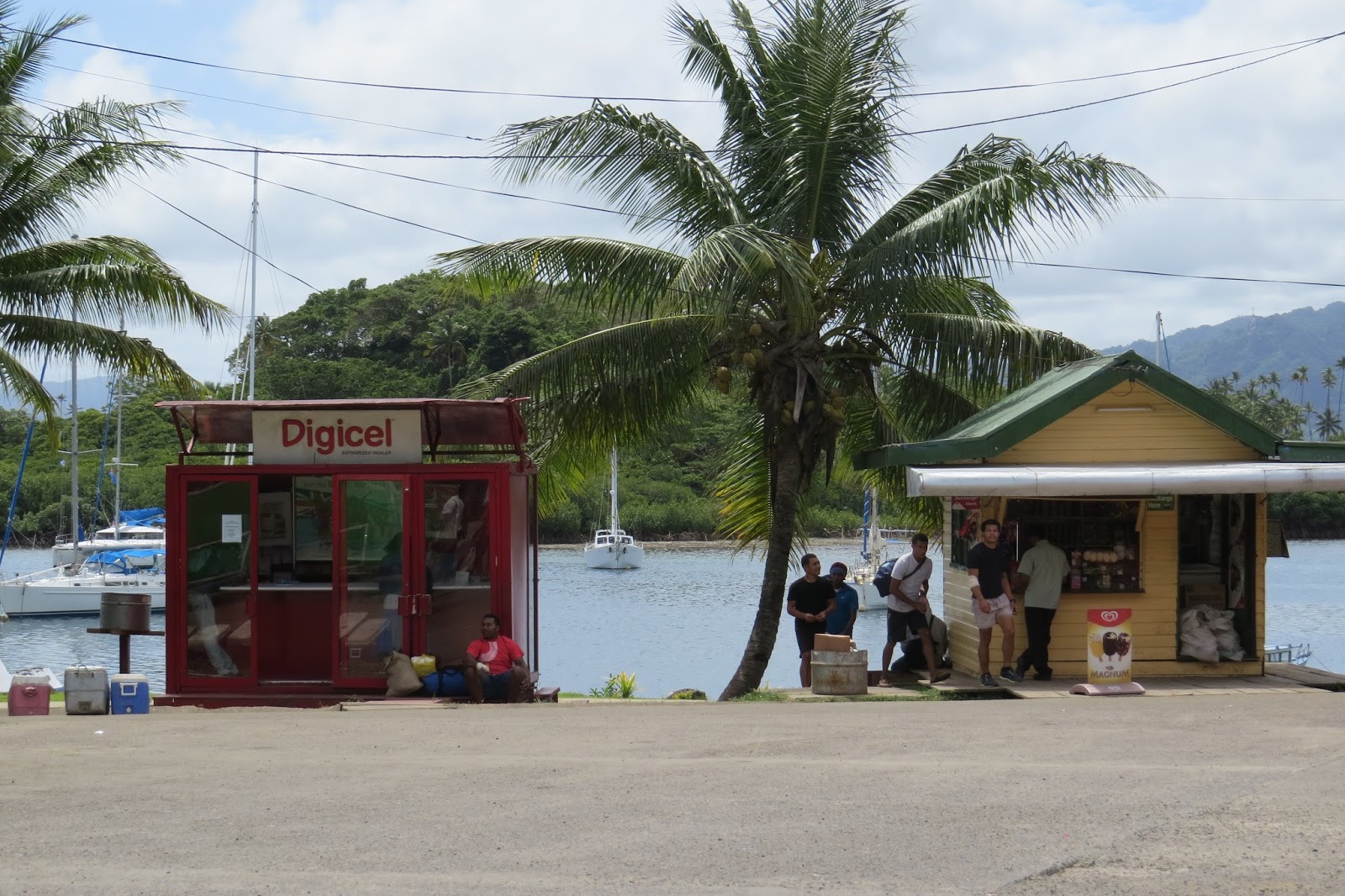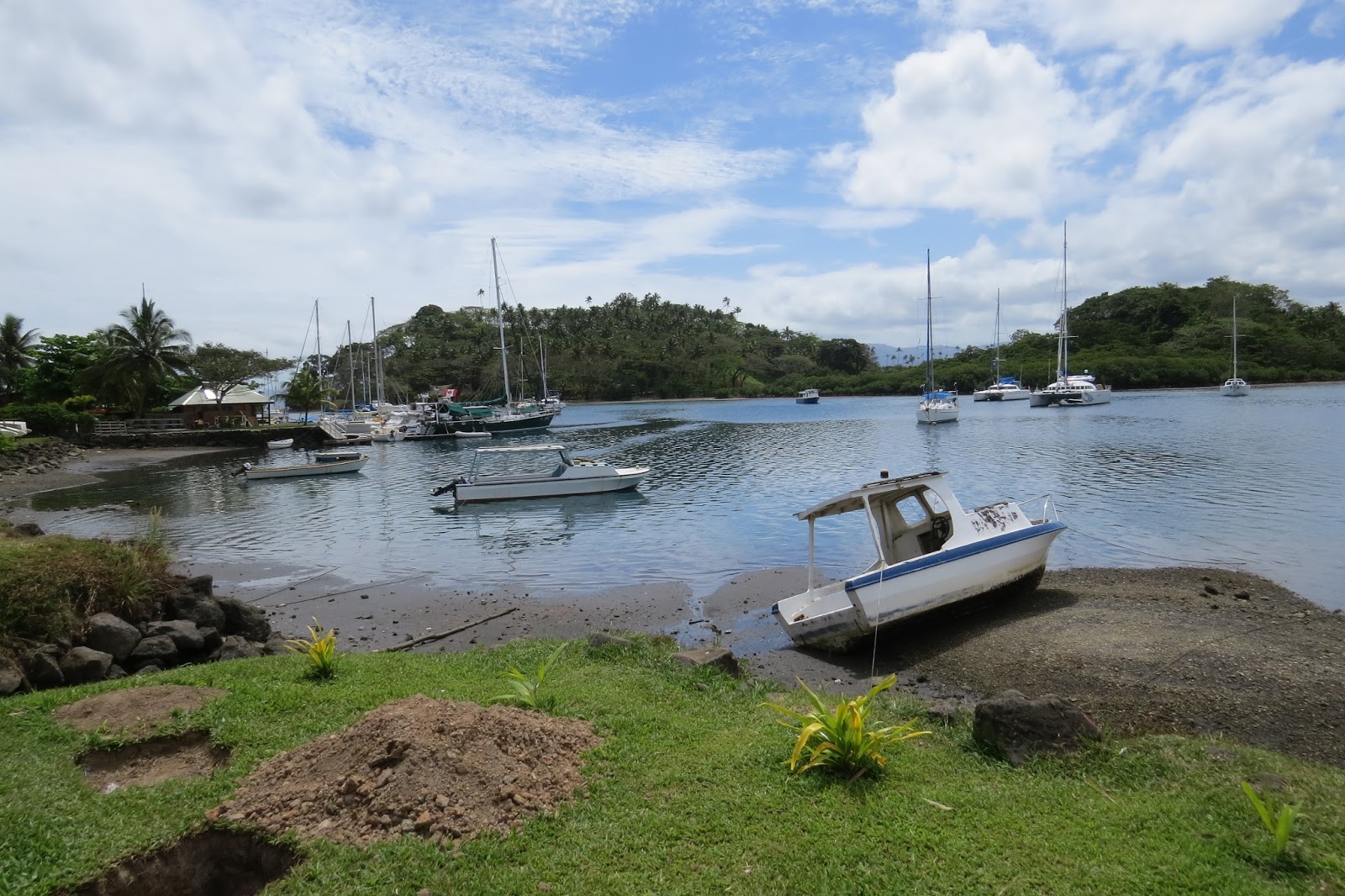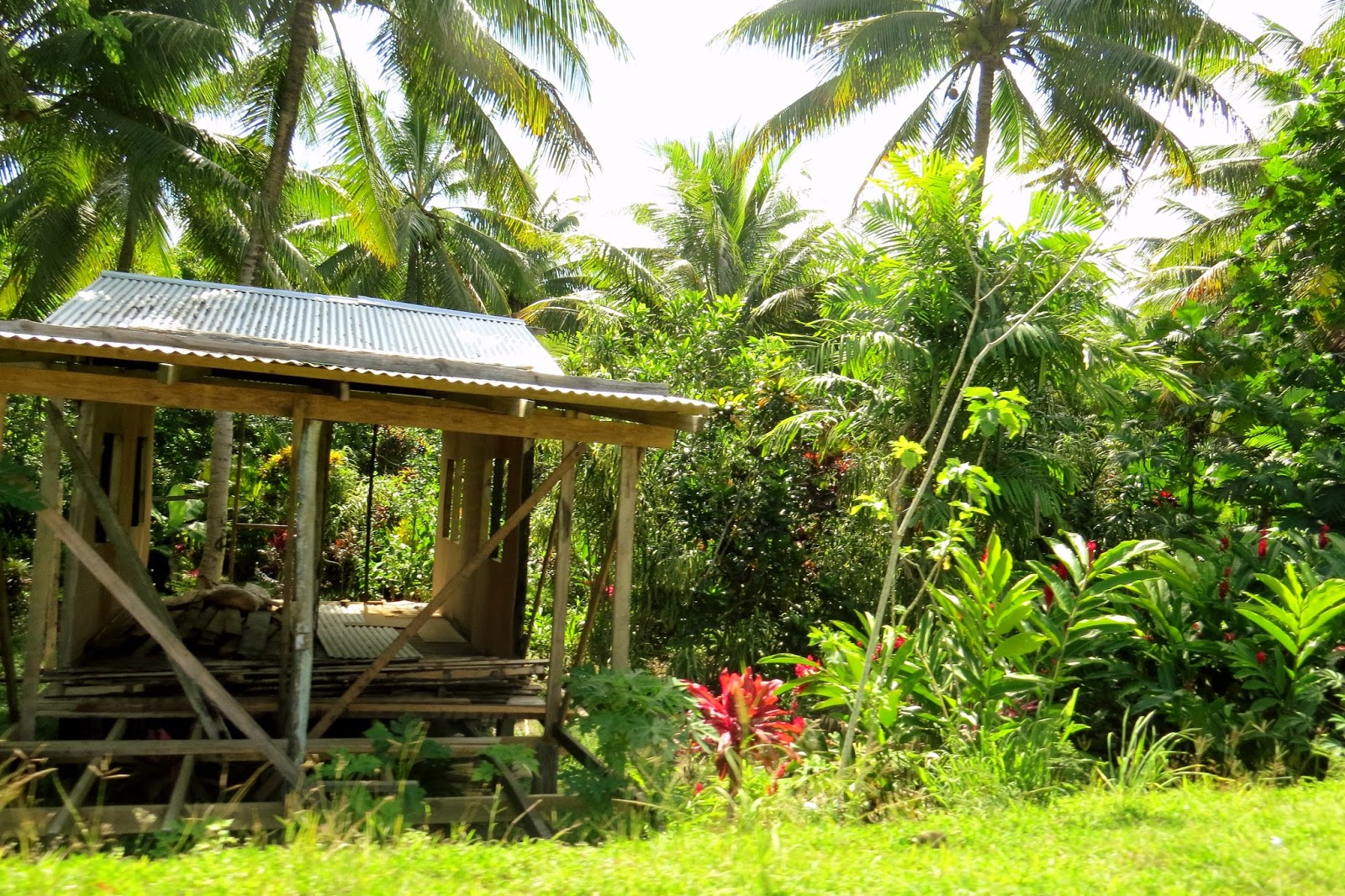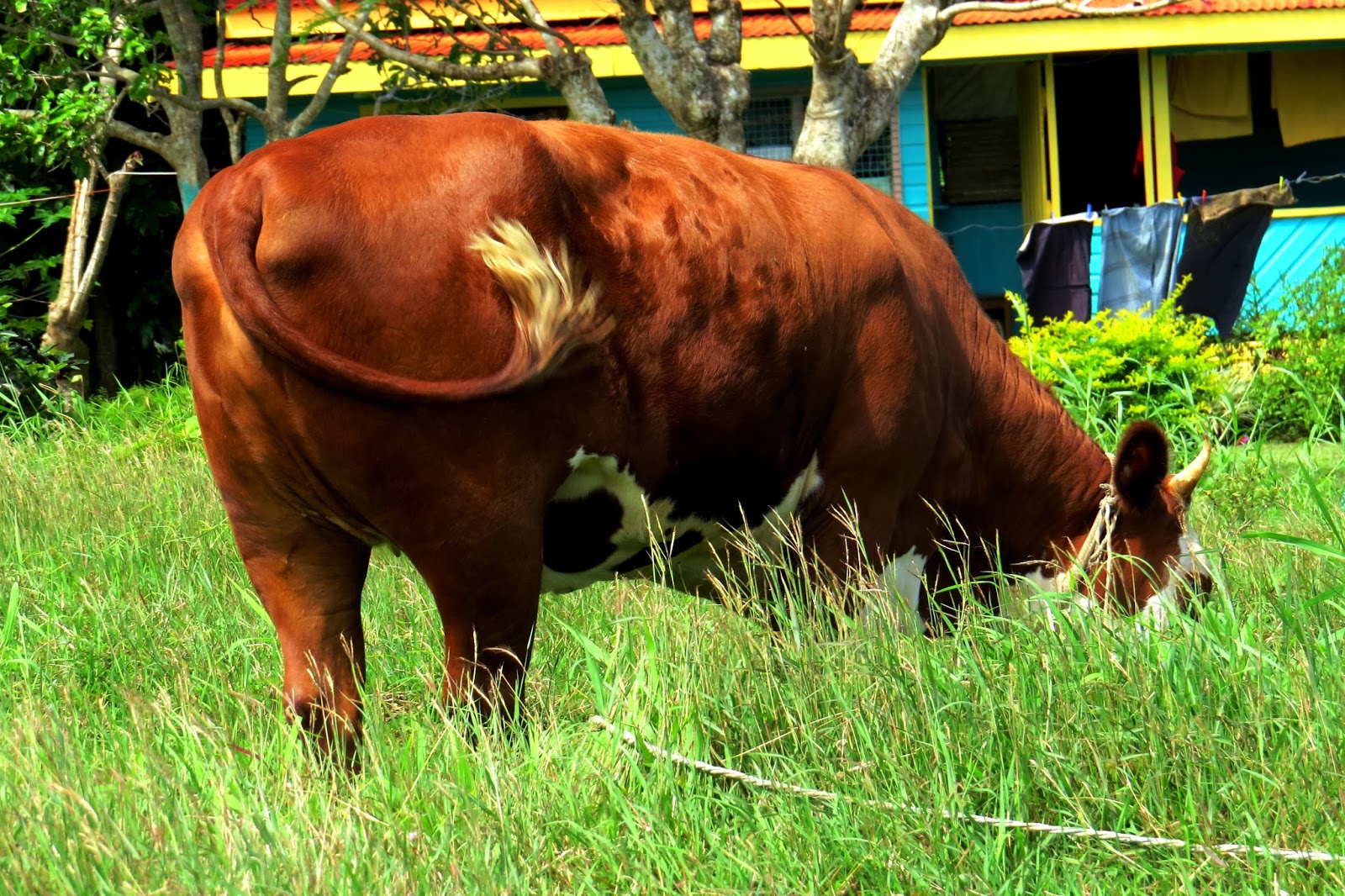 |
| Close to the center of this photo is the compound where our current home is located as seen from across Savusavu Bay as we traveled on the opposite side. |
In this large life, in the large world, each day we strive to live “small,” wrapped up in the trivialities of our every day, appreciating the call of a mating bird, a determined crowing rooster, an annoyed mooing cow, or the stuttered baa we often hear from a lonely kid goat.
 |
| We could only imagine how beautiful our photos would have been on a sunny day which had started sunny and clear, turning to rain shortly after we left. That’s life in the tropics. We still had a fabulous day! |
We watch the cruise ships, large and small, waft by each day in our magnificent ocean view. Often at night with their lights bright, we easily imagine the festivities and lively banter occurring on deck, knowing in a little over two months, we’ll be doing the same.
When we think of the future, its hard not to speculate, anticipate and become outrageously excited knowing full well what lies ahead of us. Even after we’ll have visited each continent, there will be so much left to see: the Northern Lights from Norway, a Baltic cruise, the Black Sea, more river cruises, the USA and Canada, and countries throughout the world we’ll have yet to see.
 |
| Our current home in Savusavu is located approximately 1/3 of the way in from the point in this photo. A photo below illustrates a better perspective. |
Perhaps someday, we’ll return to a few places we particularly loved such as Africa and Kauai, Hawaii. While we were in Mykonos, Greece, I longed to return to live in the pristine streets with the white houses trimmed in blue on the steep winding roads or, in the walled city of Croatia, that easily took our breath away.
We try not to think of where we haven’t been. The list is too massive. But, as we discuss the future we can’t help but attach some dreams to the future. With careful, budget minded living, there’s no where in the world beyond our reach, beyond our reality. We’ll always find a way to make it work.
 |
| The point, close to our home in Savusavu, from across the bay. |
In our old life, my only dream of travel was to visit Africa and if, somehow we never find a way to return, my dreams have been fulfilled after nine months on the continent. Is it greedy to long to return for one more life changing dose for that which we have yet to see and to return, to once again see that which we left behind? While we can.
Now, as we languish, quietly and at peace in this exquisite tropical island paradise, without a worry in the world, we try to spend our remaining time in Fiji relishing in its unobtrusive lifestyle, its gentle people and its easy way of life, keeping our minds uncluttered with excessive planning and budgeting.
 |
| We passed several small villages along the way. |
Lifting my head from my laptop as my fingers fly across the keyboard, my brain and fingers seemingly one, I need only look up a distance of 15 degrees for my eyes to behold the sea in front of us. To our left, we find the vast expanse of the open sea.
Across the bay to the distant opposite side of Savusavu Bay, where we recently traveled, we were able to see this property with a steady zoom of the camera. We were in awe of being able to see the expanse of our neighbor Sewak’s recently graded steep road to the mountaintop, which we visited only weeks ago and the land where Mario’s new home was recently built. It was magical as shown in these included photos.
 |
| Cows are always curious and we laughed when this grazing cow picked up her head to check us out. |
Living in the moment should be easy. In my old life, I was always planning the next dish to be served to our guests at the outdoor barbecue on a warm summer afternoon or, the next event to be planned or, the next day, week’s or month’s endless list of planned and on-the-calendar activities.
In this life, awakening to this view, the sounds of nature, and the knowledge that these gentle people are scurrying about, striving to provide us with an idyllic environment, I am constantly reminded not to think ahead, to live in the moment.
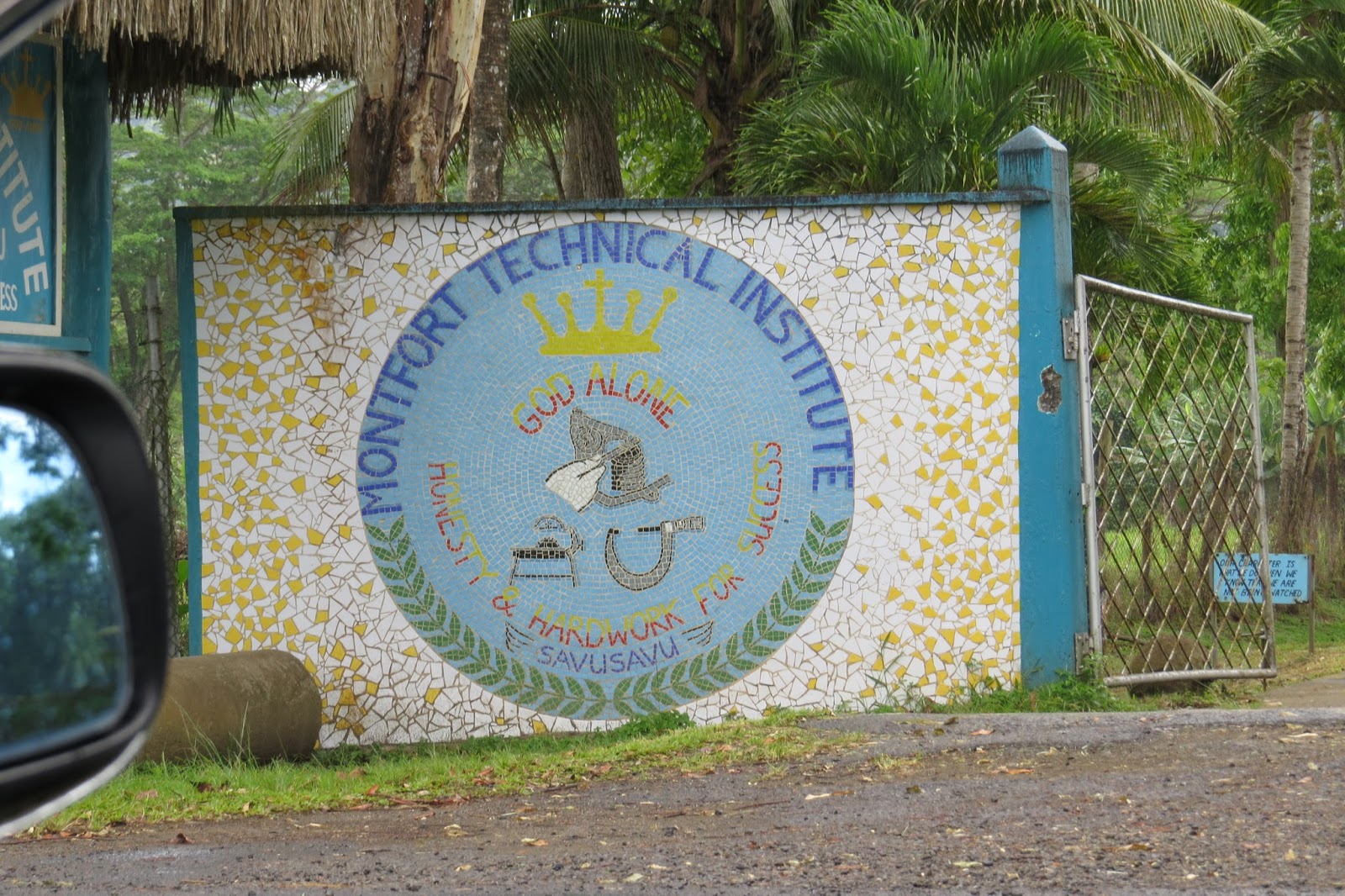 |
| How wonderful that this small island has this school for its people, the Montifort Technical Institute. |
Here in Fiji as we research future locations, we often lift our heads that 15 degrees as a boat passes by, or to listen more intently to the pleasing sounds of farm animals or birds, all music to our ears.
And when a smiling face, a genuine soul, enters our door eager to please, when asked “What can I do for you today, Ms. Jessica, Mr. Tom?” More often than not, we say, “Not a thing. We’re good. Vinaka.” They’ll make the low-to-the-floor bed, leave towels and toilet paper and once or twice a week do more. We handle the rest on a daily basis.
Cherishing in this easy life is more than we ever dreamed possible. We’ve experienced this all over the world, not so much as a result of having household help, but more from having no appointments, no backyard parties, no place we have to be at a certain time. Our only strict adherence to the clock is on travel days or when shopping and sightseeing when we don’t have a rental car.
 |
| It was raining when we stopped to take photos of these fish ponds. |
Tom says that he spent 42 years working on the railroad, constantly aware of the time of day. He, too, loves the freedom of our current lives, only wearing a watch on travel days. We can go an entire day without checking the time, eating when hungry, sleeping when tired.
After a lifetime of “must do’s” these past three years has been filled with “want to do’s” allowing us to live in the moment. In essence, for us, this is “living large” amid the small things and from time to time, thinking of where we’ve been and what, dear readers, is yet to come.
As we approach our three year anniversary of traveling the world on October 31st, we’re compiling a list of our stats; how many countries we’ve visited, how may vacation homes we’ve rented, how many cruises we’ve taken and much more, including the total dollars we’ve spent in the past three years. Please check back as these details unwind.
Photo from one year ago today, October 29, 2014:
 |
| The last time Tom purchased anything sweet for himself, was fudge from this shop in Lahaina, Maui, Hawaii which he devoured within a day. For more photos of our visit to Lahaina, please click here. |








































































